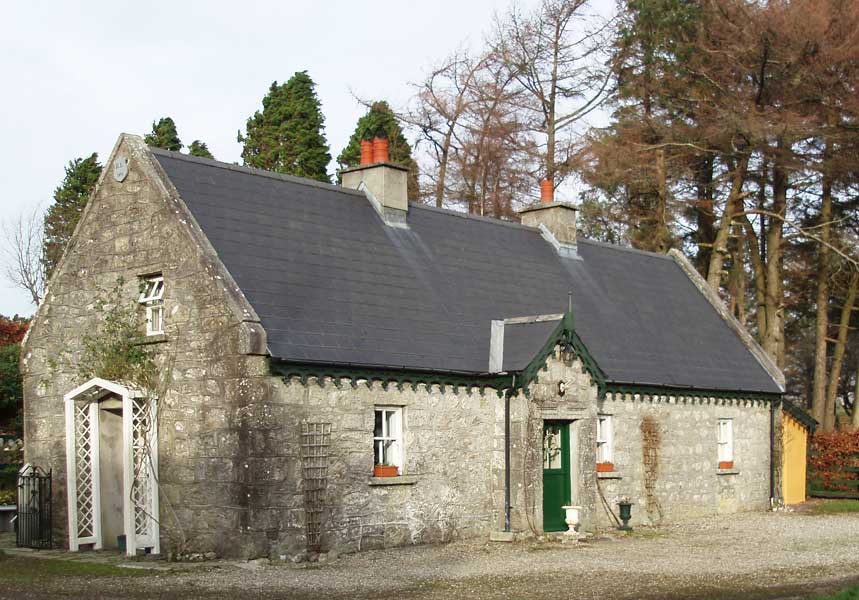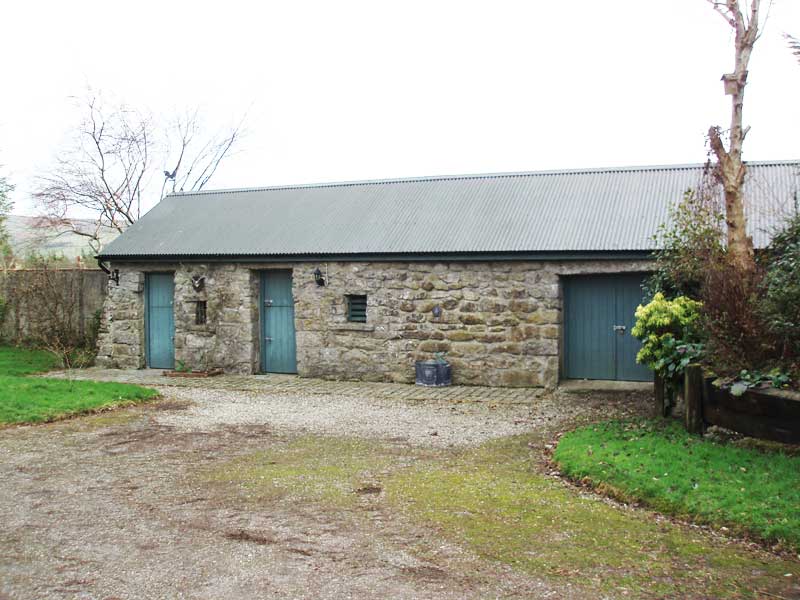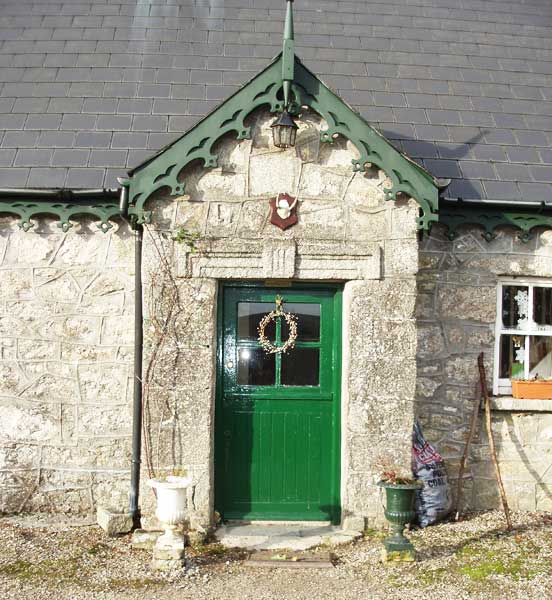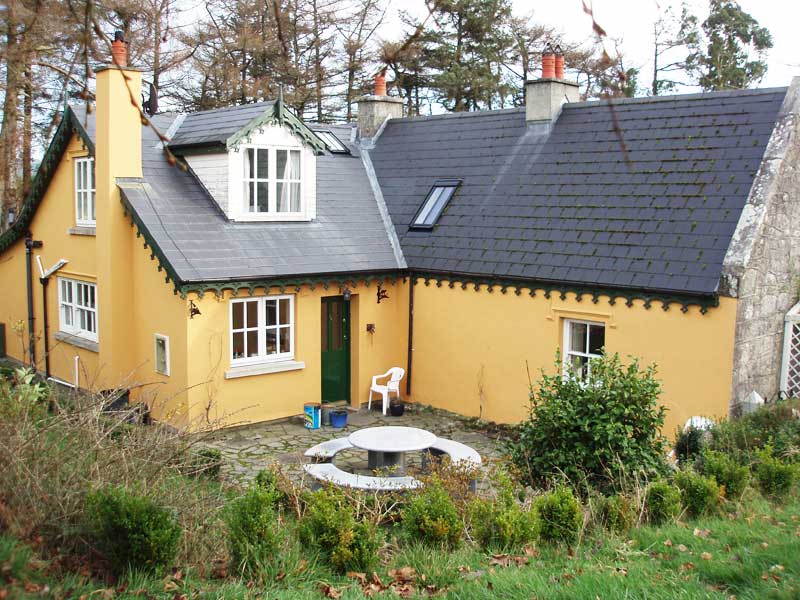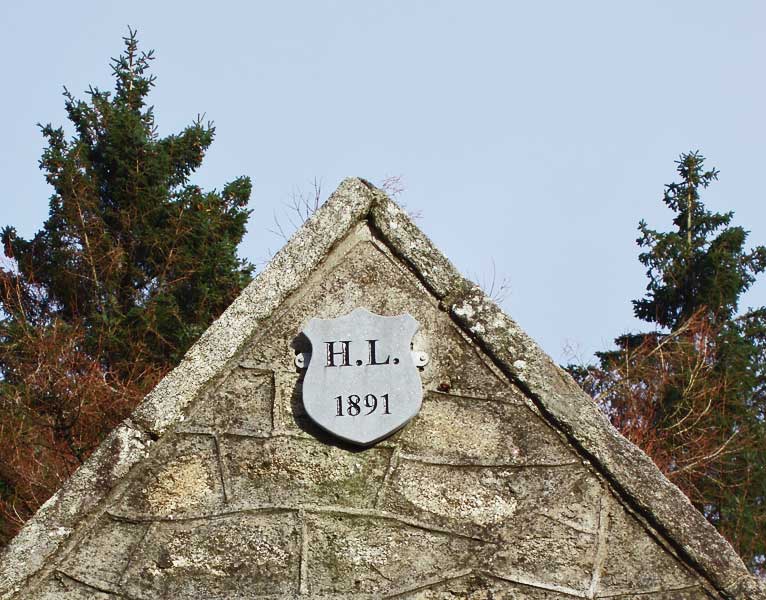Knockananna
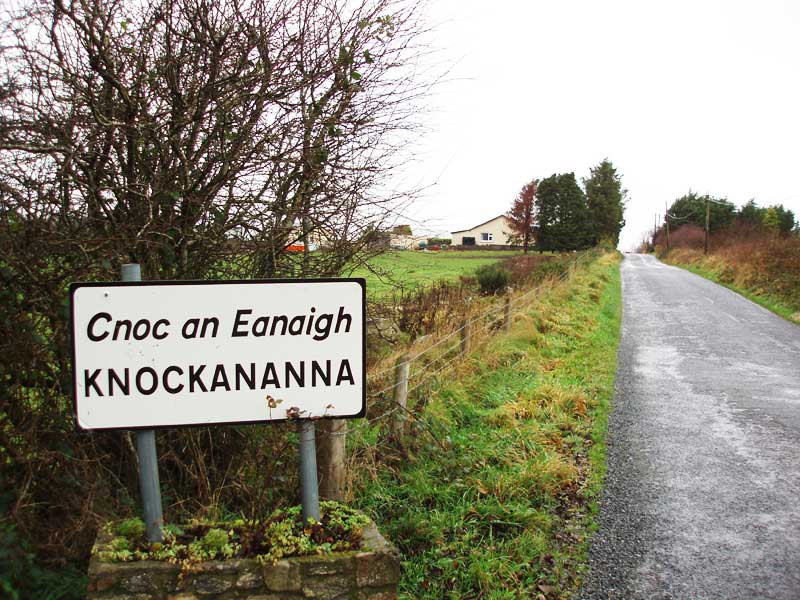
Knockananna is a small village in Co. Wicklow, near the border with Co. Carlow. It's English language name is derived from the Irish Cnoc an Eanaigh (The Hill of the Marsh).
The observant traveller, no matter how quickly he passed through it, would immediately get a sense of the village's respect for its history. There is no shortage of memories of 1798 and the Republican tradition in general, and a strong sense of religion permeates the place.

At the head of the village, a group of thatched cottages vie with a massive Holy Year grotto and a monument to 1798.
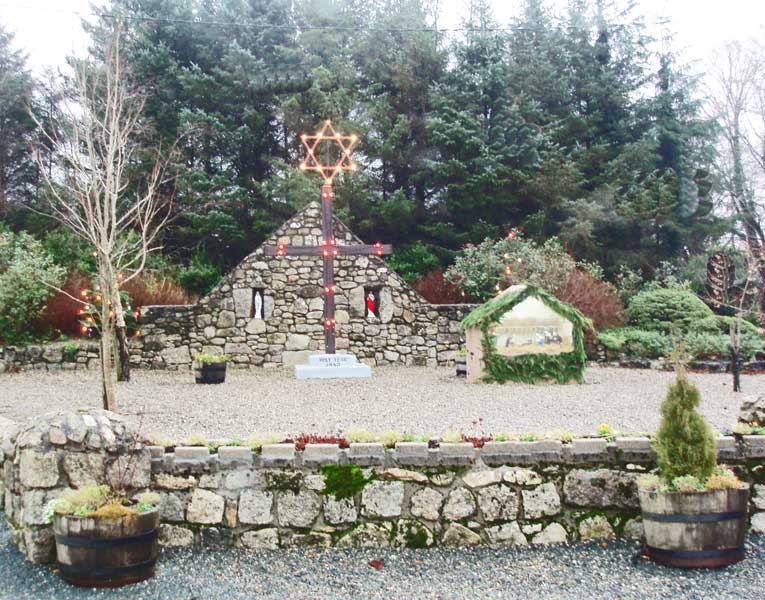
Holy Year was 1950, and this massive grotto commemorating it is further enhanced with the trappings of the approaching Christmas.
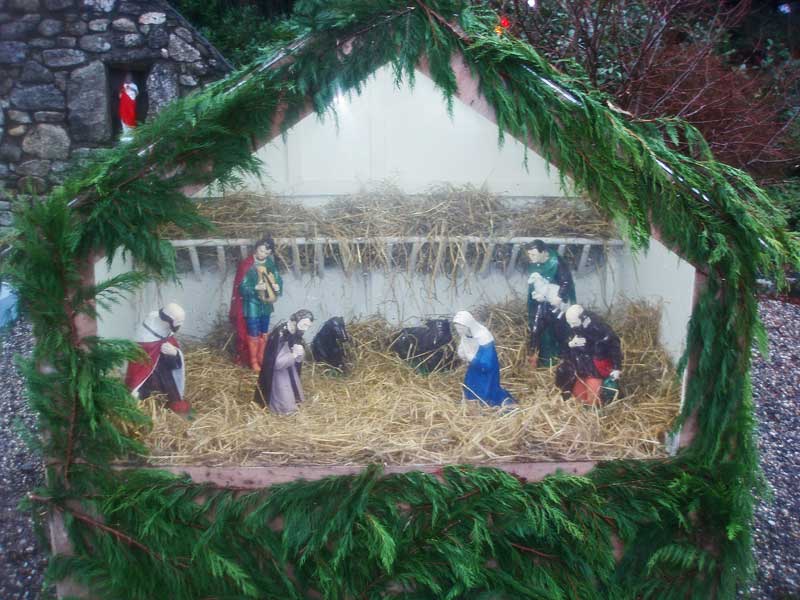
The large crib observes the tradition that the baby is not put in until Christmas morn (unless, that is, somebody has already nicked it). However it is most unlikely to be a crime scene as a local lady of long standing assured me that this was a very peaceful place where even the youth don't cause any trouble.

I'm sure the Star of David is there to evoke the old testament and the lineage of Jesus and is not making any statement about the behaviour of the current State of Israel.

The other major grotto at the head of the village commemorates the 200th anniversary of the 1798 rebellion, and, the longer you stay around, the more you realise how much this is 1798 country.
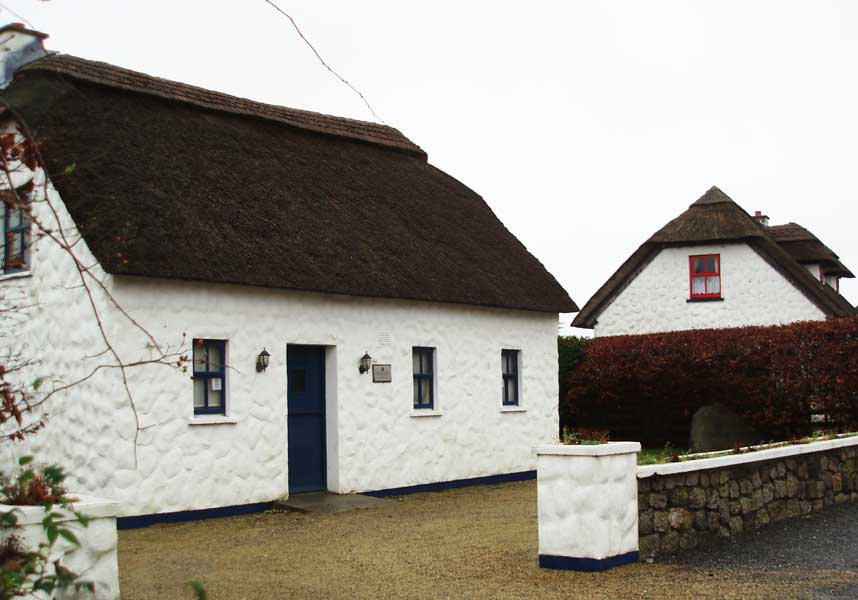
This thatched cottage houses the local office of the Baltinglass Credit Union.
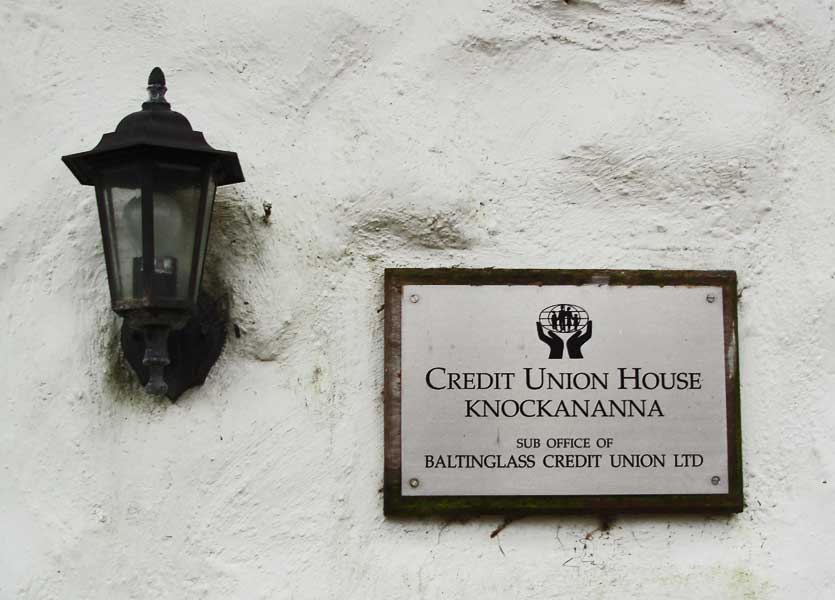
Like a lot of other things in the village, it presents itself well.

This is a local both�n, which, in its day might well have housed as many people as the extended house to which it is now a shed. :)
Well, maybe, maybe not. The extended house to which I referred is
Teach Cuais na Seilge (
Hollow Lodge or perhaps more appropriately
Hunting Hollow Lodge). This is hunting country, including deer, of which more later.
"Hollow lodge in its current structure was built in 1870 replacing the building which now houses the games room and storage shed. This building was originally what is known as a long farm house which had two family rooms and a loft to sleep in and also had a cow byre and hen house attached to one gable wall."
The building now housing the games room and storage shed referred to above.
Front door of the current house with appropriate hunting and seasonal ornamentation.
Rear view of the current house
Plaque on one gable end of the current house reflecting development in 1891.

I was intrigued with the new church, which I subsequently found out was built in 1977. As you can see it is a relatively small, compact and pleasant looking church from the outside, and, these days, you never know what surprises might await you on the inside.
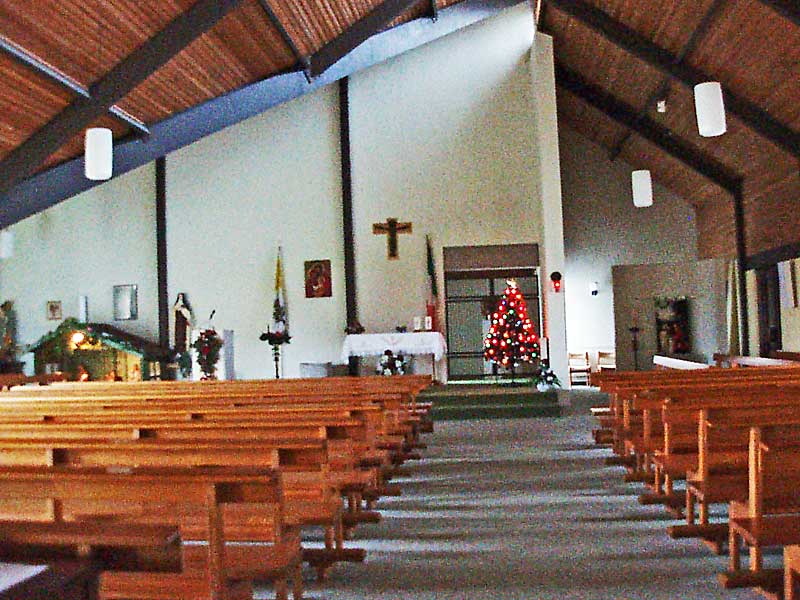
This is the inside view. A pleasant church, as you can see, though it tends to be relatively dark inside and could do with a little more natural lighting.

It reflects the changes taking place around the time it was built including a return to simplicity of design and the priest facing the people.
The juxtaposition of the national and papal flags probably testify to the strong national tradition in the area on the one hand and involvement in last year's International Eucharistic Congress in Dublin on the other. And a neat covering of all the angles with the crib on the one side and the Christmas tree on the other. You did notice that in the previous picture!

The stations of the cross are very much in a modern style, breaking with the earlier formal heavier models.

Something I hadn't seen before, the false prophet virus checker. I'm sure that it is normal practice to ask a visiting priest for his credentials, but I've never seen it up front like this. It sort of has the air of an accident black spot about it and I'm curious if, like the locusts of old, there has been a plague of fakes turning up over the last number of years.
Or might it be aimed at the silenced? The Vatican is a dab hand at getting the locals to do its policing for it.
This even has a slight whiff of the old commercial notice that advised against asking for credit as a refusal might offend.
Anyway, there is a much more fundamental question hovering over this particular church. It is quite a surprise to see the "old" church still standing right beside it and looking structurally sound.
So being the inquisitive type, when I got the opportunity, I asked a local lady how come.
I was not prepared for the response, which particular I will spare you, but the gist of it was that this new priest came and instead of fixing up the "old" church, which I gather was nice inside and which was high in the people's affections and respect, this guy decided instead to build a new church from scratch for at least double the price it would have taken to fix the "old" one.
Caused a lot of bitterness did that and the scars are still there, festering below the surface.
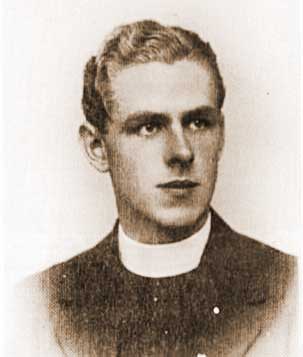
This is he. Fr. Patrick Boylan, ordained in 1936, so he was forty years into his priesthood when he arrived and inflicted the not inconsiderable expense of �110,000 @ 1977 prices on his poor unsuspecting flock.
Having said all this, and in the interest of fairness, I have to admit to having talked to a local farmer who told me the priest was a very nice man, and who, a bit like his father, felt that whatever the priest decided was all right and should not be resented in perpetuity.
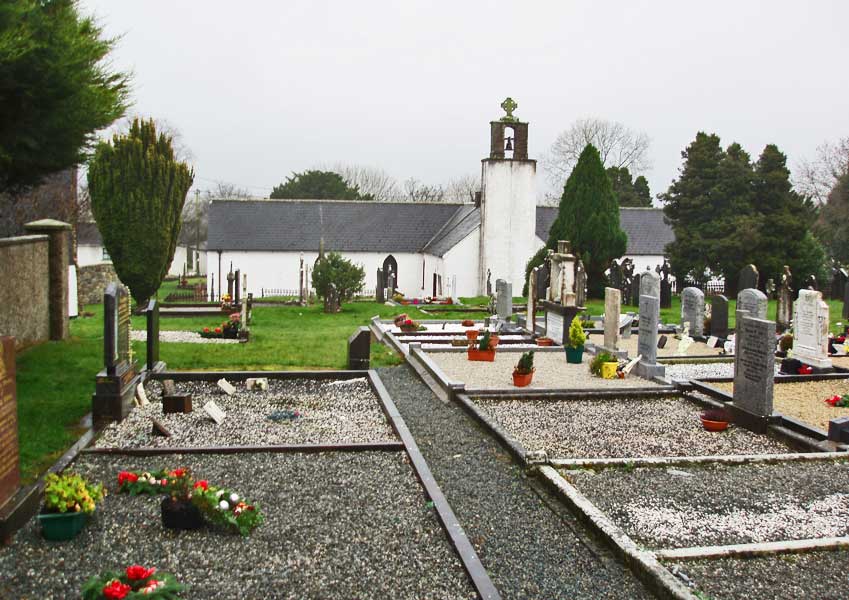
Never mind. Let's get on with a quick look around this very interesting graveyard.That's the old church in the background.
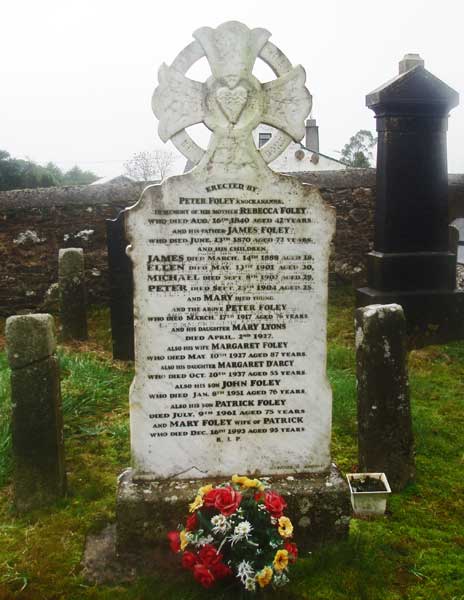
I don't know how far back the cemetery goes, but the earliest easily readable stone I saw was 1840 (above) and detail (below).
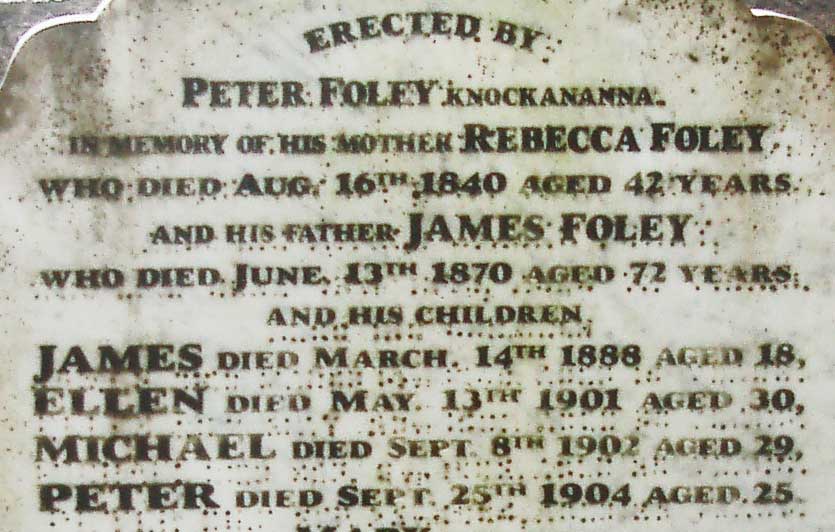

I don't know the significance of these arrowhead gravestones (or phallic symbols, as was remarked to me by a member of the next generation). They have the IHS inscription on them and they look quite old.
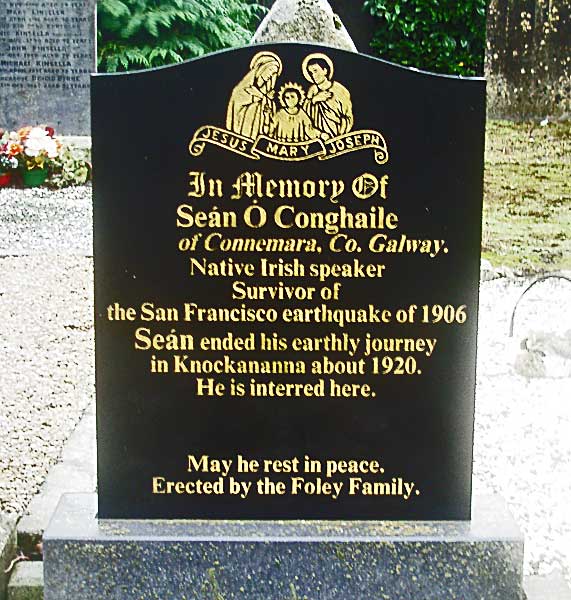
It's not often you'd see it recorded on a tombstone that someone was a native Irish speaker, whatever about surviving the 1906 San Francisco earthquake.
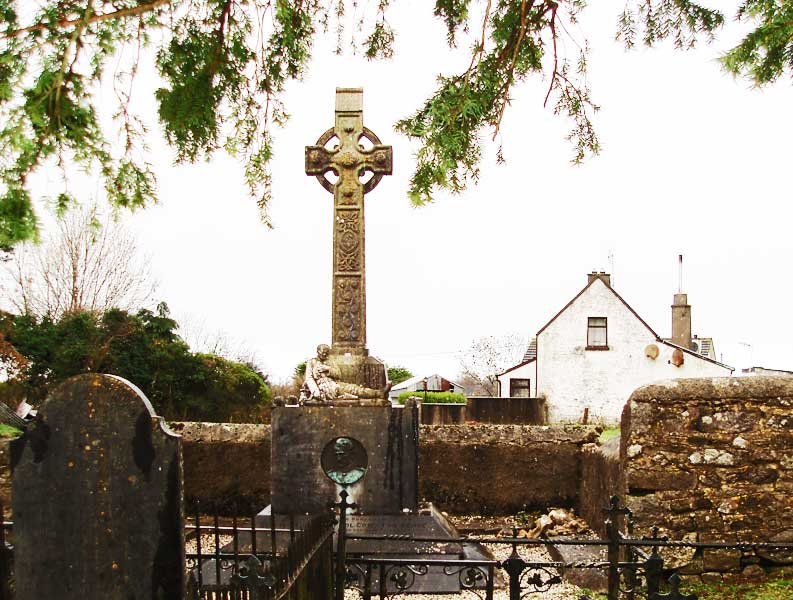
Colonel Commandant Tom Kehoe (Free State Forces) was born Knockananna 1899, He was a member of Michael Collins's assassination Squad, which took out the British spies on 21 November 1920. He was killed in an engagement in Macroom 16 September 1922.
This very elaborate monument was raised over his grave in Knockananna graveyard.
You can see a silent path� news newsreel of the
unveiling of the monument on 6 November 1924.
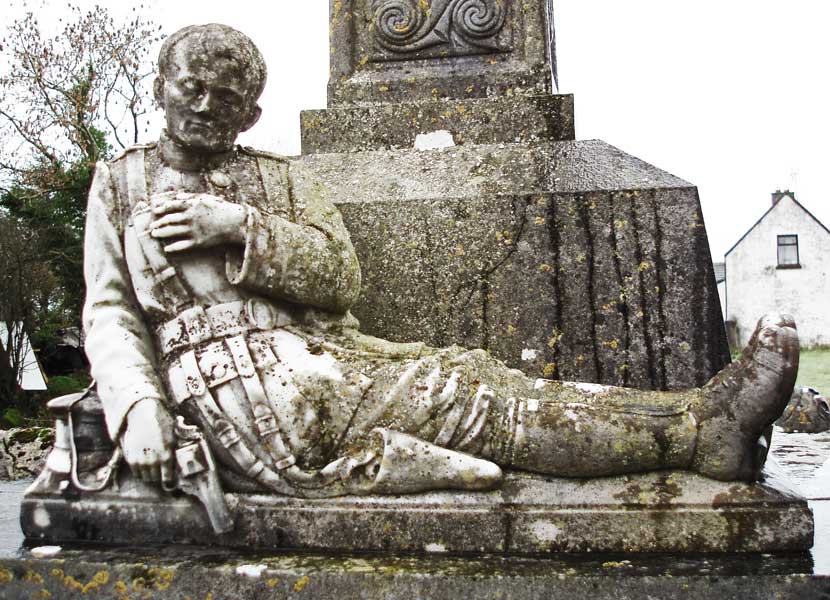
This is an unusually explicit statue for a graveyard, I would have thought. But it is certainly in keeping with the tenor of the monument.
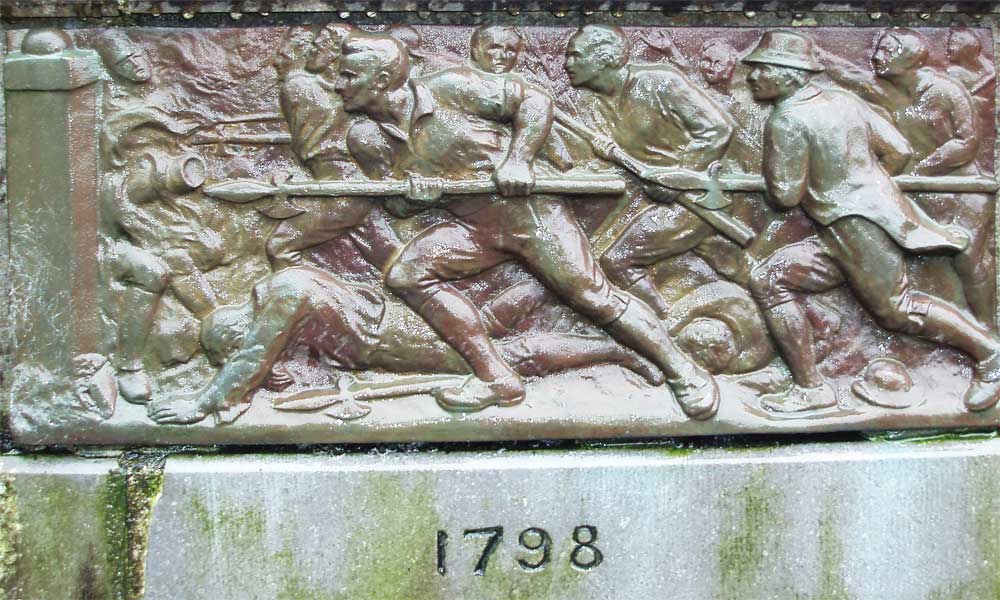
In addition to the graphic statue of Tom lying dying in the incident in which he was killed, the monument carries illustrations evoking the rebellions of 1798, 1867 and 1916.
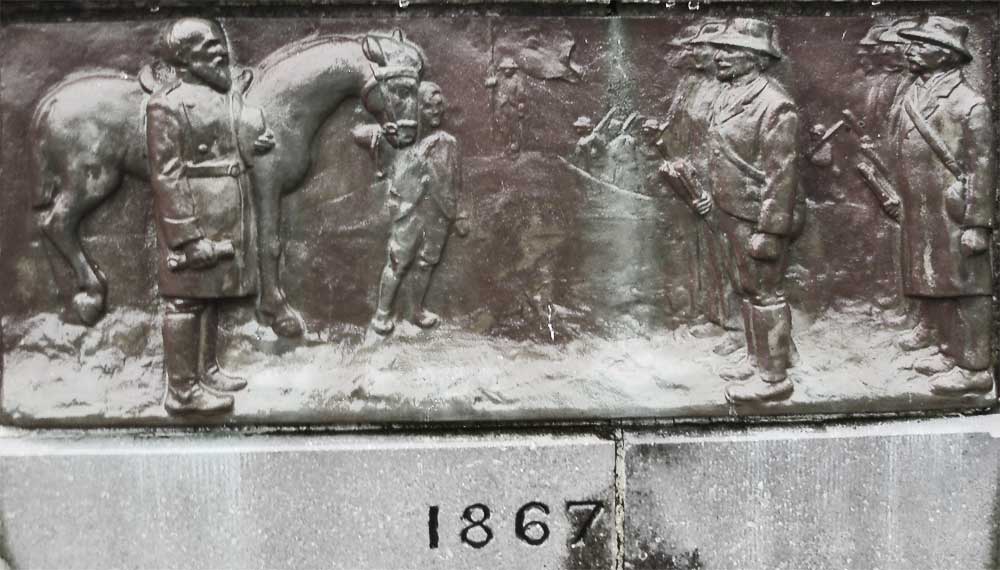
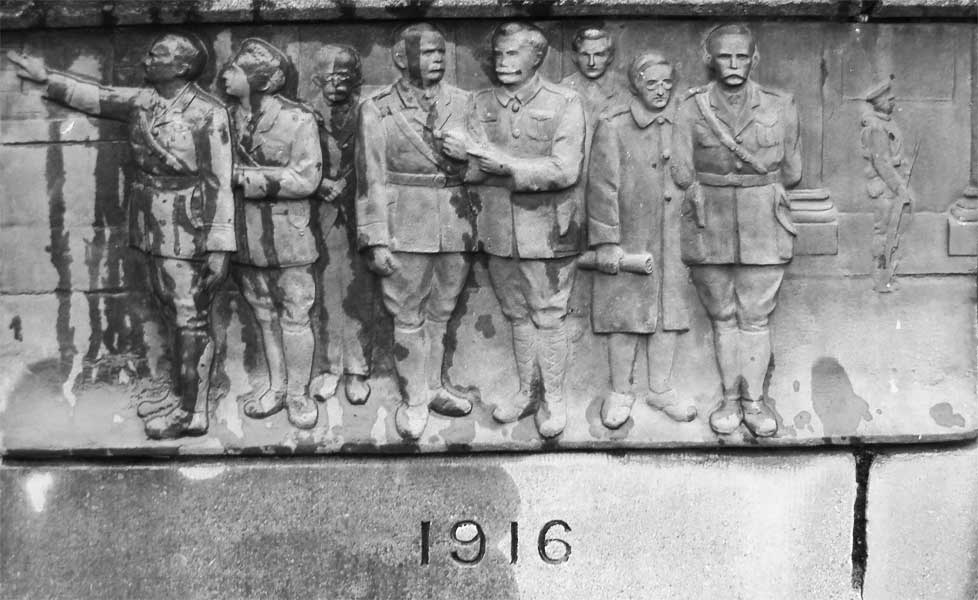
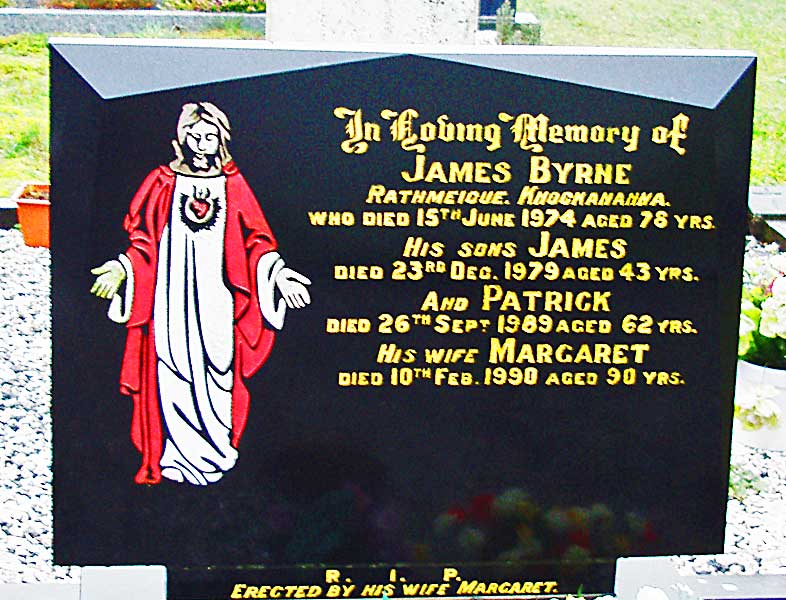
And finally, a particular local feature and design: holy pictures engraved into the stone and then painted in. There are quite a few of these in this graveyard, which I suppose suggests a local provider.

Saw a fair amount of sheep around, and cattle, some outdoors and some indoors, as in the above picture.
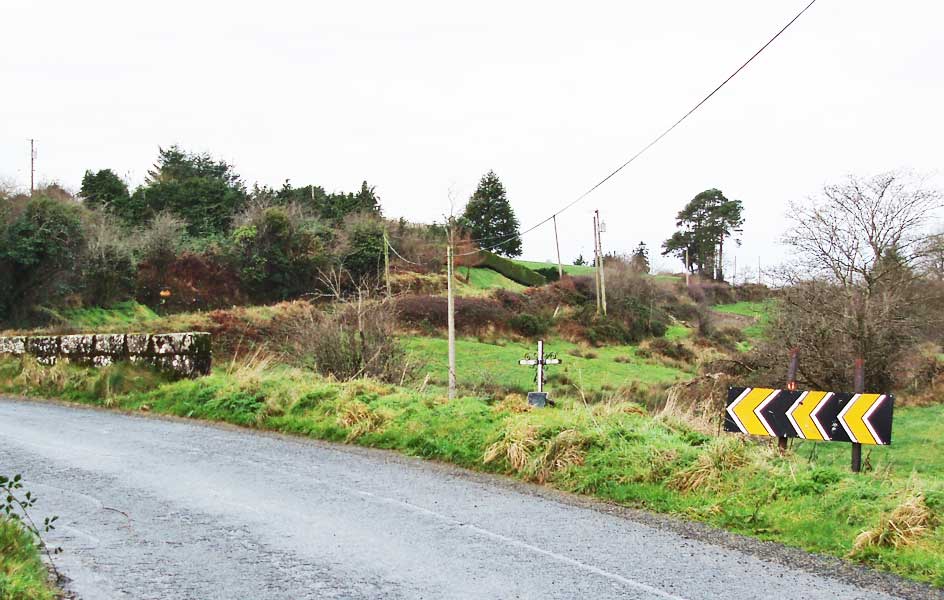
The roads are very narrow and twisty and vehicles hurtle along at a pace. You gotta be careful in a car though. Threats can materialise very suddenly. Perhaps this is what happened here on the 6th of February 1989.
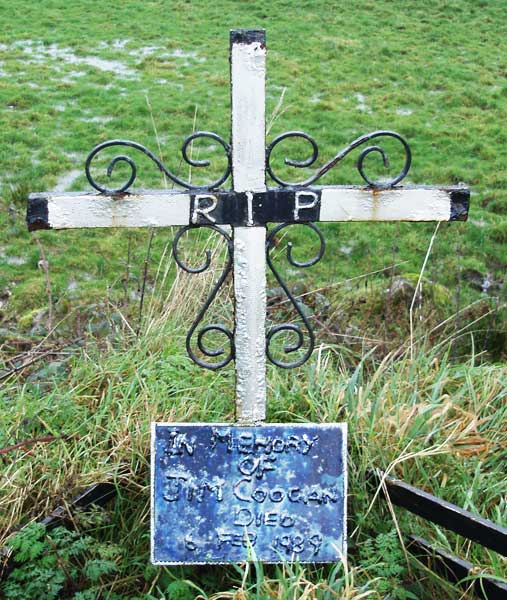

There are many distractions on the side of the road, some quite catching.
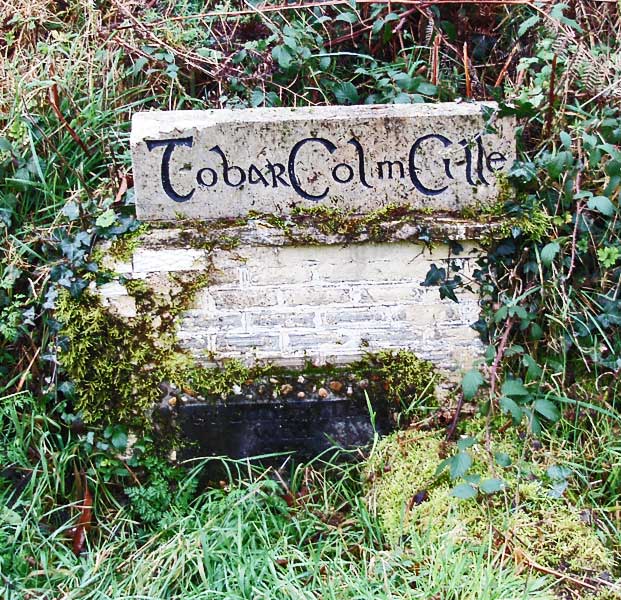
A holy well dedicated to St. Colm Cille (Columba). Many of these were part of a clash of cultures within the Roman Catholic Church around 1880, when Rome was trying to stamp out local religious practices and superstitions.

A fine cock with a clather of kiwi fruit thingies. The few real cocks I managed to hear at about 4pm seemed able to manage only half a cock crow. I've no idea what the significance of that is.

For a slightly different take on Christianity, this is the nearby (Protestant) Moyne parish church and graveyard. It is in a very pleasant setting and also has some interesting features.
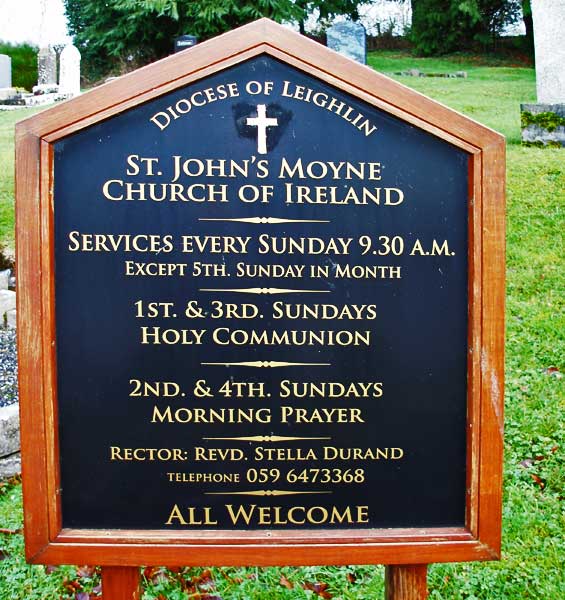
For starters, the Rector is female, an increasing feature of Church of Ireland parishes.

Clearly it was not always so. This is the grave of a previous Rector, Charles Lewis Morgan Jones BA, and if he wasn't a Welshman I'll eat my hat.
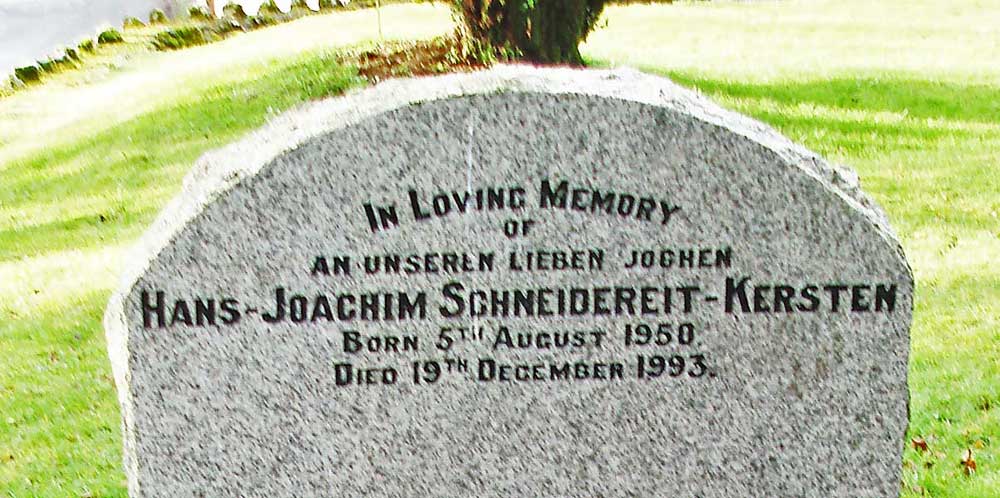
An unusual mixture of English and German. Not quite sure it fits. A local told us that Jochen's wife still lives in the area.
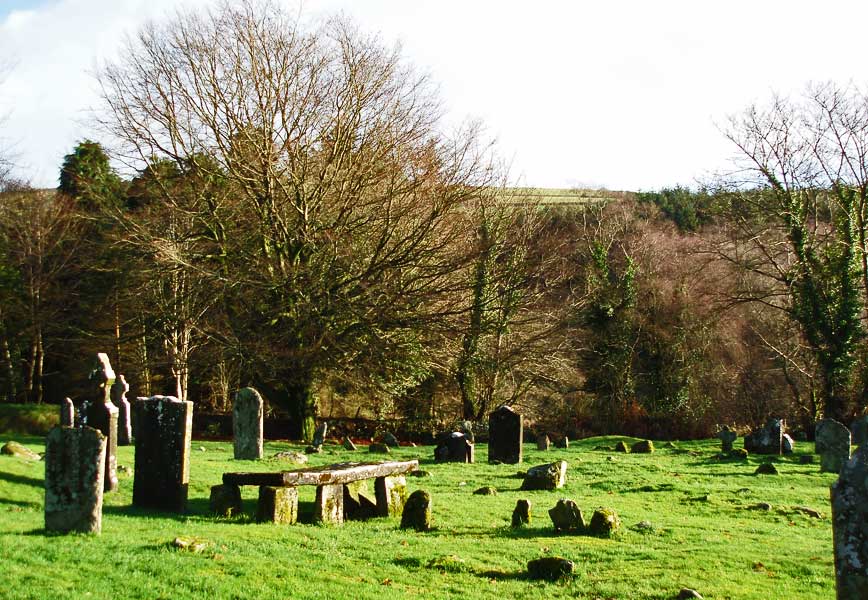
And, in case you haven't had enough of cemeteries, this is another much older Catholic one in the area.
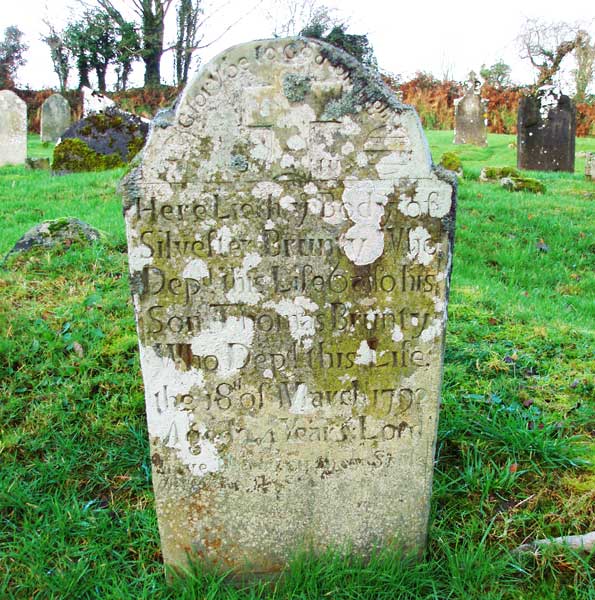
The oldest easily readable gravestone in this is from 1792 above.
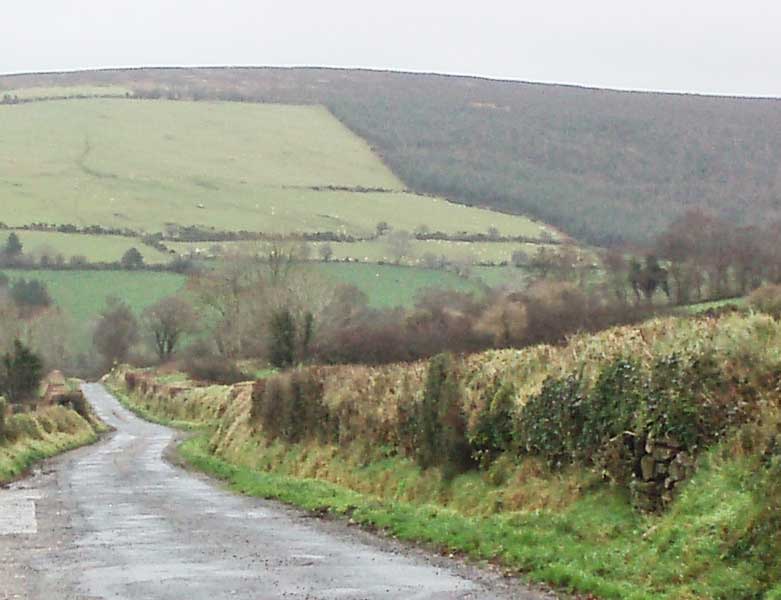
One more location, and then we'll leave the dead in peace. It came up in conversation with a local farmer that there was a famine graveyard in the area. Not one to be missed by a cemeterial afficionado. He told us it was at the bottom of this road, and had he not told us we would never have found it.
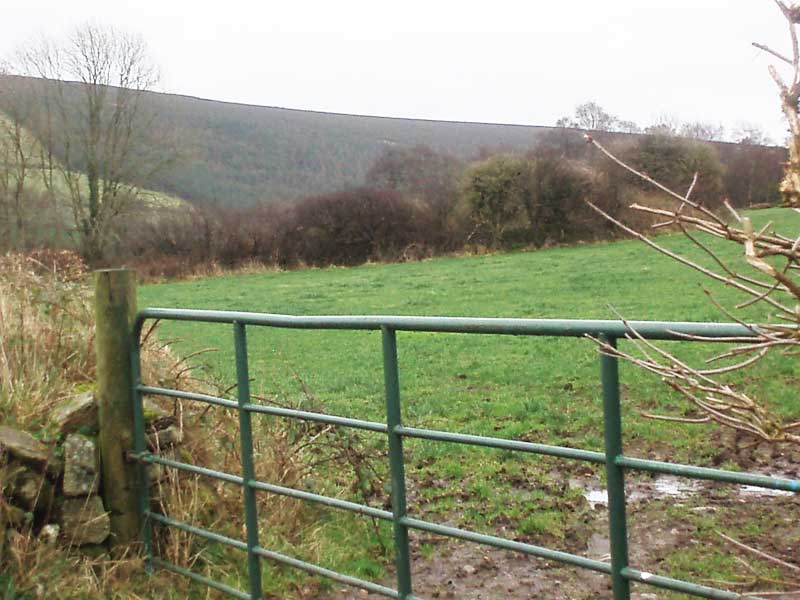
It was still invisible from the field gate, hidden in a circle of trees.
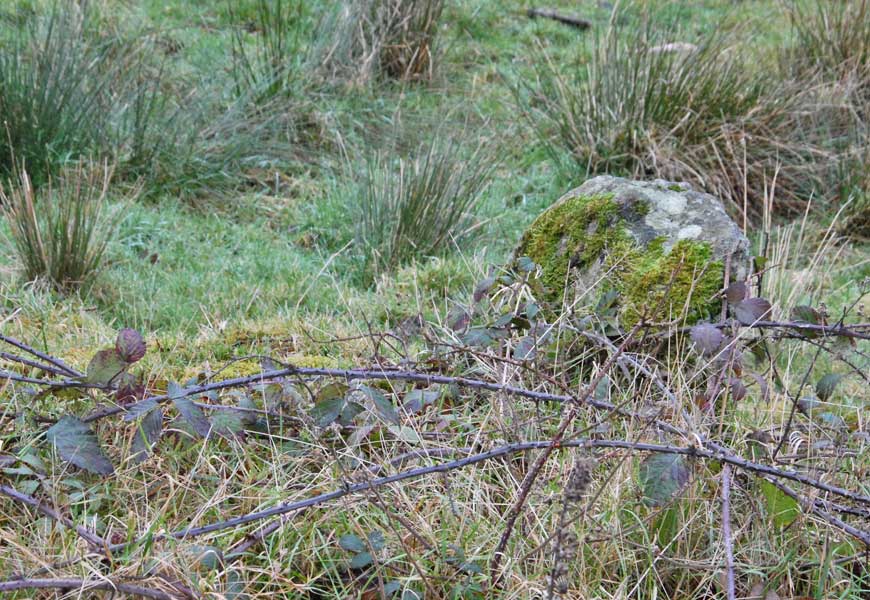
A piece of rough land, covered in brambles and rushes and from which the rocks had not even been removed before the burials.
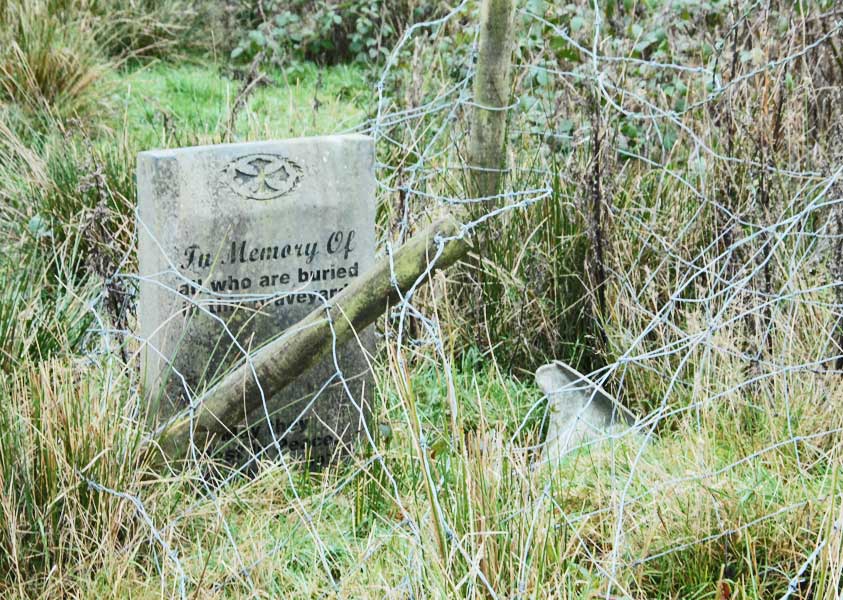
There was only one single gravestone.
In memory of
all who are buried
in this graveyard.
May they
rest in peace.
Erected in 1907

There was also a sign at the entrance to the graveyard reminding us that it was "Kyle Graveyard" and this was accompanied by a depiction of Our Lady Queen of Heaven and a representation of the Lourdes Basilica. It is not clear when these were put up but the depiction was very much the worse for the wear.
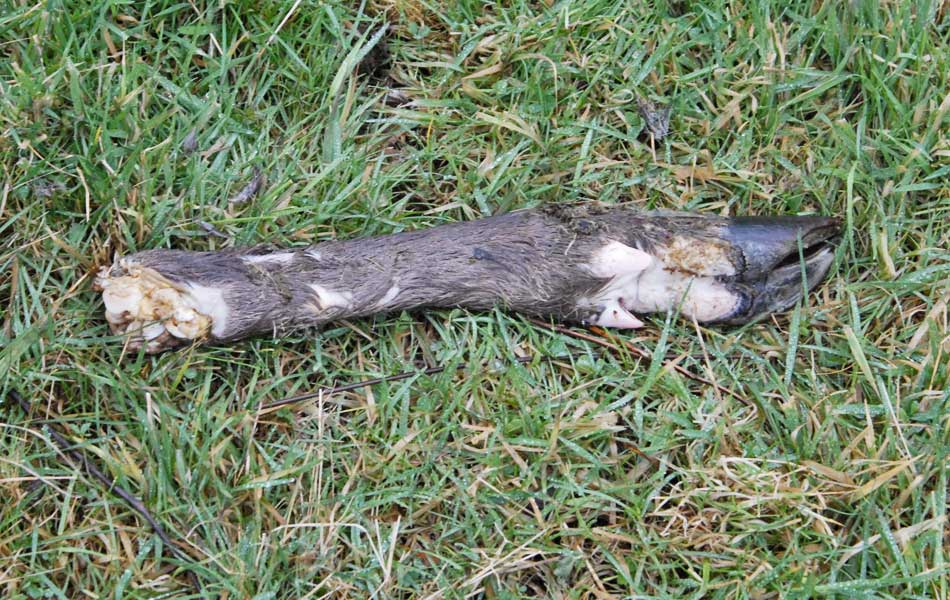
When we saw these, we had visions of Zombies but it turned out that they were deer's feet. Apparently some of the youths hunted dear and cut, or broke off, their feet and dumped them in the graveyard. Some were relatively fresh, like the one above, others were reduced to bare bone.
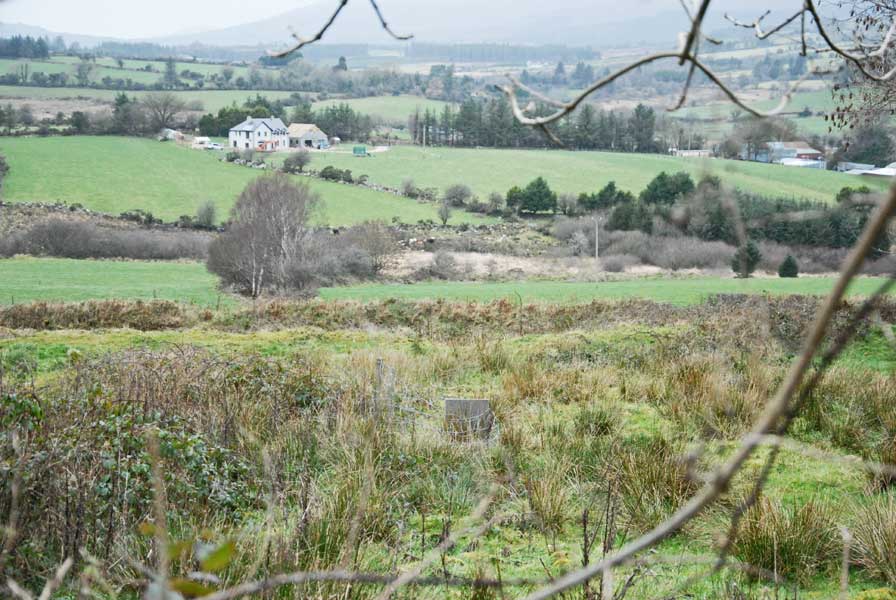
It was a sad, sad, place, recalling a national catastrophe the effects of which are still with us, but the victims of which are largely forgotten. However, not to end on a sad note, the graveyard is in a beautiful setting as you can see above. The sole gravestone is in the centre foreground.










